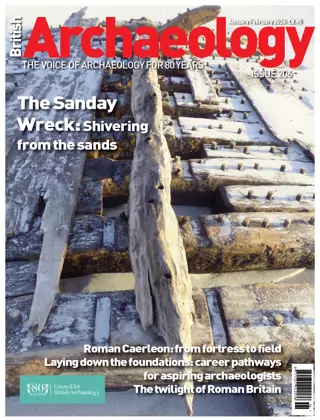
British Archaeology Magazine
05 July, 2019
Main story: Details of the Anglo-Saxon Prittlewell prince are revealed as study of the burial excavated in 2003 is published and a new exhibition opens in Southend. Other stories include: Reading’s secret dig - The Ministry of Justice (MoJ) has secretly excavated at Reading Prison, where Oscar Wilde witnessed the execution and burial of a fellow inmate as described in The Ballad of Reading Gaol, and over remains of Reading Abbey, where Henry I was buried. Stonehenge stone irradiated in 1950s - Radioactive sodium was rushed from Harwell to Stonehenge in 1958 to measure cracks in one of the large megaliths. Bolts were drilled through to secure it. A core of sarsen removed at the time has been returned to the site’s custodians, having travelled in private across the US. Life-long learning using archaeology in care homes - Taking archaeology to care homes stimulated older people to talk about their lives and ask challenging questions. Middens and the end of the Bronze Age - How did societies change when iron first came to Britain? A new project revisited an extraordinary mound at East Chisenbury in Wiltshire, hoping to create the first requirement of answering that question – a scheme to say what happened when. Britain’s earliest scripts - In the first of two features about early scripts in Britain, we visit north-east Scotland, where a new project has dated Pictish symbol stones, suggesting they were inspired by contact with the Roman world. The second feature is set in Orkney. A famous Neolithic monument was visited by Norse travellers in the 1100s, who inscribed messages that have been digitally examined for the first time. Big data on the Roman table - Archaeologists like to classify ancient pottery by type, texture and colour, but such things may offer little help with understanding how the vessels were used. A major collaborative project has considered new ways in which pots might inform our knowledge of Roman dining.
...Read more





















